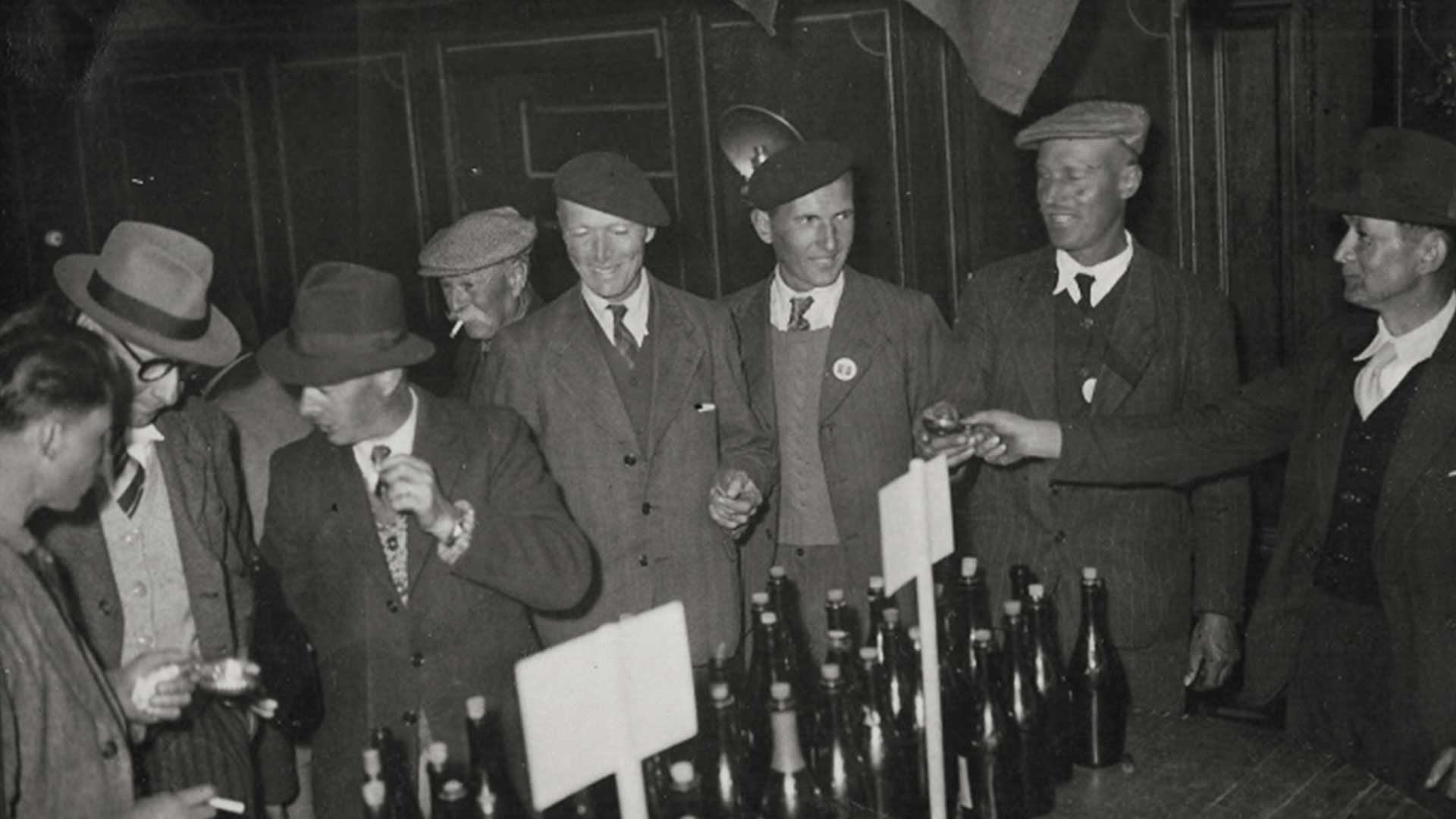The identity “Famille Chermette”

This new logo embodies the heritage of Domaine Famille Chermette across generations since the 17th century, while preserving and enhancing it.
Jean-Etienne initiated the creation of this logo, which symbolizes both the family's continuity and unity. He wanted to reflect the various stages of the estate’s evolution over time. The logo is part of a continuous process of adaptation to meet the expectations and tastes of our clientele.
In this spirit, Jean-Etienne Chermette is introducing a new range of wines under his own name to complement the existing selection.
1636 : This is the date of the oldest archived document found, which records the Vissoux family's payment of taxes to the local lord.
The golden stone : This represents the foundation and strength of the estate, symbolizing our beautiful Pierres Dorées region.
The path : It traces the journey through time — the lives, work, and legacy of our ancestors. It connects the ancestral roots to the future, linking the "V" of Vissoux to the "C" of Chermette. It widens and opens toward the future. The logo features two branches representing Pierre-Marie (the father) and Jean-Etienne (the son), also symbolizing the estate’s two ranges of wines.
The arch : It represents the vaulted cellar housing the oak casks, built in 1873 by Pierre-Marie Chermette’s great-grandfather, Claude Marie Vissoux. It remains open to signify the importance of welcoming and satisfying our clients and visitors.
The letter "V" : Subtly suggested, it refers to the "V" of the Vissoux family name, which originated the estate and was passed down through Pierre-Marie Chermette’s mother, Eugénie Vissoux. The estate’s location is also called “Le Vissoux,” and the domaine bore this name until 2018.
The wings : They symbolize a forward-looking vision, marking the estate’s renewal with Jean-Etienne’s arrival.
The "C" of Chermette : It crowns the design and represents the estate’s new name: “Famille Chermette.”
The entire logo suggests a cross-section representing the heritage passed down from generation to generation — from vine growing to winemaking. This shape also evokes a vessel, inviting sharing and conviviality through wine tasting.
We hope this description helps convey the message we wish to share through the creation of this logo and the modernization of our labels. This logo reflects our desire to foster a closer connection and stronger bond with our clients. It traces the journey of a historic family moving confidently into the future.
Our history The Roots the estate
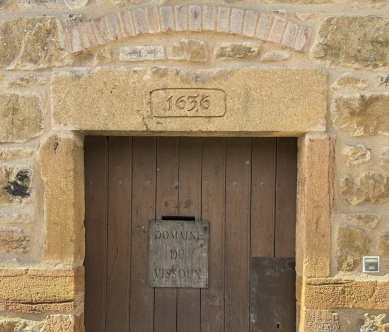
1636: date of the oldest known record found, confirming the payment of taxes to the local lord by the family bearing the name Vissoux.
Genealogical research shows that the family has been established in Vissoux since the 17th century.
Here are the dates that are on a fireplace as well as a photo of the bread oven in the family house.
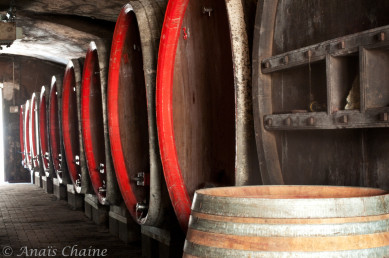
CONSTRUCTION OF THE VAULTED CELLAR
Pierre-Marie’s great-grandfather, Claude-Marie Vissoux, who was the mayor of the village of Saint-Vérand, built a beautiful stone vaulted cellar, which was already quite large for its time. It was filled with foudres (large wooden casks) that were smaller in size than the ones we use today.

Pierre-Marie Vissoux, dead at the war on 1st of September, 1914 in Méricourt, grandfather of Pierre-Marie Chermette. He leaves a young mother in her twenties at the head of the farm. She came from Violay in the Loire and had no knowledge of the wine sector at all. In addition, most of the men were at war and there were not enough people to do the work. Life shouldn't have been easy for her at that time.
1946 year of marriage of Eugénie Vissoux with Maurice Chermette. Vissoux is also the surname of Pierre-Marie Chermette's mother, Eugénie Vissoux born in this hamlet. Pierre-Marie's father, Maurice Chermette, was born in Collonges in Bois d'Oingt.
Returning from captivity after the war, he married Eugénie Vissoux in 1946. He relaunched farming by planting new vines. He was selling his wine to merchants and his cellar quickly acquired a good reputation.

Maurice Chermette in a Beaujolais wine competition. The 3rd from the right.
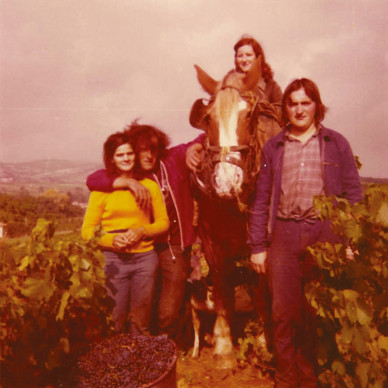
The harvest in 1972 with René Fayot on the left.

Maurice Chermette on the press during the harvest in 1972.
In 1982 at the age of 22, Pierre-Marie Chermette took over the family estate. As soon as he settled in, he decided to sell his wine in bottles. Very quickly, he became committed to quality and wanted to have control of the whole process, from the cultivation of the vine to the marketing of wine. He is very critical of the tasting of his wines and seeks zero defects.
Maurice Chermette is always there to give a helping hand to his son or his opinion on wines. Even in his old age, he participated in the harvest by helping during the vinification.
1986 marks the meeting between the famous chef and restaurant owner Jean Brouilly and Pierre-Marie Chermette. Beaujolais primeur with yeasts and banana flavor are in fashion. Under the impetus of Jean Brouilly, the winery, a pioneer in the field, chose another path: that of the Cuvée Traditionnelle Vieilles Vignes, vinified in the pure Beaujolais tradition.
Not chaptalized and without addition of yeasts, this cuvée is bottled in spring. And it is the wine for which one Martine and Pierre-Marie Chermette have chosen the old Burgundy bottle. Thus dressed, it entered Parisian wine bars and was a real success. It was this cuvée that initiated the winemaking style of the estate.

Pierre-Marie Chermette and Martine launched a non-chaptalized Beaujolais Primeur produced from plots of Old Vines. The first vintage was born in 1987. This Primeur became very popular in Parisian wine bars. It is currently commercialized all over the world.
Martine Chermette leaved Laboratoires Boiron and invests fully in the Domaine du Vissoux to sell wines in France and abroad. She puts her passion for natural products at the service of the estate. She likes to link art and wine by organizing exhibitions of paintings and plastic works during the big annual tasting.
The couple bought three small plots in Vaux en Beaujolais: Rochefolle, Plageret and Fagolet, from an aunt of Martine, the Revin family.
They are more than a hundred years old vines. They produce a high-quality nectar in very small quantities which is used for Beaujolais Coeur de Vendanges.
The Cuvée Traditionnelle old vines is successful and becomes the emblem of the Vissoux estate. Photos taken in Jean Brouilly's park in Tarare.
Martine and Pierre-Marie Chermette are among the very first winegrowers in the south of Beaujolais to take an interest in crus and buy vines from Fleurie Poncié and Moulin à Vent Rochegrès.
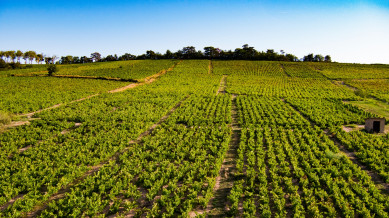
Martine and Pierre-Marie Chermette signed the purchase of a plot in Fleurie les Garants, a very interesting solar terroir facing south-west.
One Art One Wine: The art of making wine the closest to the grape
The idea is to be the least interventionist possible both in the vineyard and in the way of making wine.
Sustainable agriculture in the vines, manual harvest, traditional Beaujolais vinification without chaptalization, without yeast, little sulfur.
These methods allow the terroir to express itself fully and to obtain authentic and personalized wines.
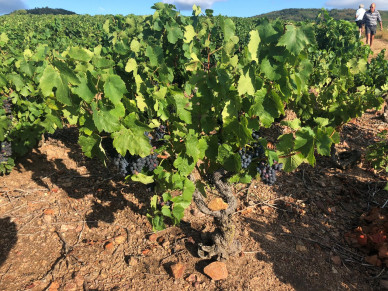
In 2002, Martine and Pierre-Marie Chermette acquired the La Rochelle plot in Moulin-à-Vent.
Pierre-Marie decided to uproot the Gamay vines and plant the Chardonnay grape variety in Collonges in the town of Légny and Bois d'Oingt. Indeed, the clay-limestone soil is more suited to Chardonnay than to Gamay. This new terroir will give more structure and minerality to the Beaujolais Blanc.
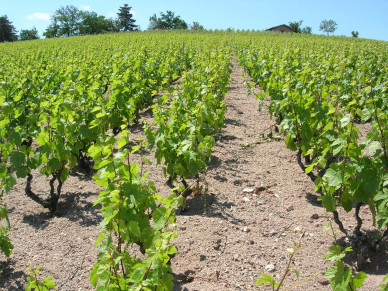
Purchase of a plot in the Brouilly appellation, at the foot of Mont Brouilly called Pierreux, on very stony soil as its name suggests. This acquisition has an emotional side because it is the place where Martine Chermette's paternal grandmother was born.
Pierre-Marie Chermette launched out in the development of two Crémants de Bourgogne, the brut with a little dose of the sugar liqueur added and the extra brut with no sugar at all. These were the first bubbles at the Domaine du Vissoux!
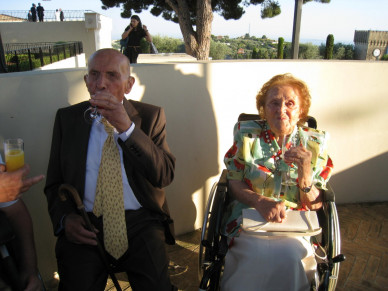
On October 2, 2011, Eugénie Vissoux Chermette left for another life at the age of 96. Her smile and joy of life never left her. She particularly liked to party with her family and friends.

December 13, 2012 Maurice Chermette leaves us almost a hundred years old. His optimism has always brightened the family and the estate. He had carried out three mandates at the town hall of Saint Vérand.
Under the impetus of European policy and inter-profession, the Vissoux estate is engaged in a restructuring of the vineyard.
The planting method is old and hardly adapted to the new cultivation standards.
10 hectares of vines are uprooted. Gamay plants are replanted in wider rows. The vine stocks are more widely spaced on the trellis guaranteeing better ventilation of the vine.
This allows for prevention against diseases, a reduction in treatments and a move towards organic farming.
A gigantic earthworks take place on 10 hectares of the Vissoux hillside.
The earthmoving company organizes a very precise network of trenches with drains, on the advice of Pierre-Marie Chermette to allow the drainage and evacuation of springs and runoff in the ditches at the bottom of the vines.
At the same time, the estate is investing in the construction of a new 800 m2 vat, very functional and with a beautiful wooden frame. New offices juxtaposed with the winery will emerge.
The winery ensured the complete production of Crémants de Bourgogne: wine making, foam grip, disgorging, dosing. These different stages require a lot of work throughout the year.

Martine Chermette invests in office design with a "feng shui" architect. Together they choose organic materials: wood, organic floors and paintings. The space is friendly, conducive to sharing and communication. The relocation took place in July.
First harvest in the new vat!
The winemaking work is done in superb conditions in the new winery. The 800 m2 vat was built according to the current standards with 40 thermo-regulated vinification tanks for the reds, 10 vats for the crémants, 5 for the whites and 3 for the rosés.
The team appreciates the practicality of the installations. The vatting is carried out from the outside. No device circulates inside the vat which is exclusively intended for vinification. From the mezzanine, we have a beautiful point of view, in particular on the impressive wooden frame.
After studying wine and international trade as well as wine-making experiences abroad, Jean-Etienne Chermette joined the family estate. His role is versatile: vinicultural work, winemaking, marketing and trade in France and abroad.
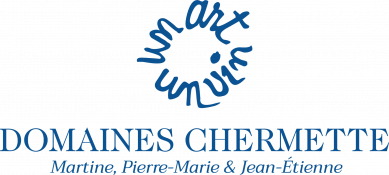
Domaine du Vissoux became Domaines Chermette!
The estate now extends beyond Vissoux with plots spread from north to south of Beaujolais. It's time to rename it.
DOMAINES CHERMETTE with an S represents a plurality of appellations, terroirs, wine ranges, men and women who unite the Chermette style.

The Cuvée Traditionnelle also changed its name and is now called Origine Vieilles Vignes.
Jean-Etienne wanted to give it a new name because it was this cuvée that initiated, in 1986, our method "the closest to the grape": respect for the environment, harvest at full maturity, successive sorting, natural yeasts and Traditional in Beaujolais semi-carbonic vinification.
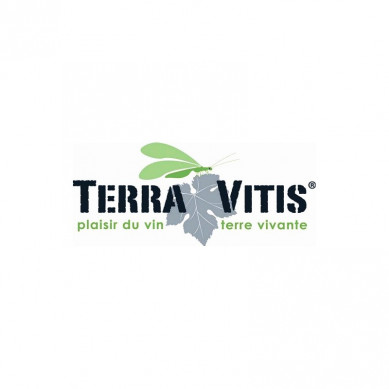
Our environmental approach for the respect of soils and vines, engaged for many years, was rewarded by obtaining TERRA VITIS certification in early 2019 for wines of the 2018 vintage.

HVE 3 label
The Terra Vitis certification was replaced by the French HVE 3 label (High Environmental Value).
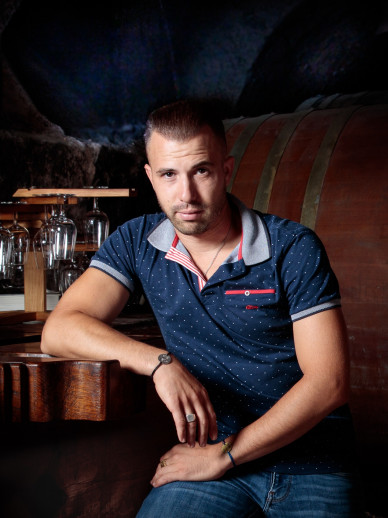
Jean-Etienne Chermette becomes the manager of SARL FAMILLE CHERMETTE, overseeing all winemaking, vineyard, administrative, and commercial operations. He handles the vinification of both wine ranges, Pierre-Marie’s and his own, in collaboration with Pierre-Marie Chermette.
Solar panels
We have installed a large area of photovoltaic panels in order to achieve self-sufficiency and store electrical energy.
Water collection tanks
We have installed three underground rainwater collection tanks. We collect rainwater so that it can be reused for processing and cleaning during the winemaking process.
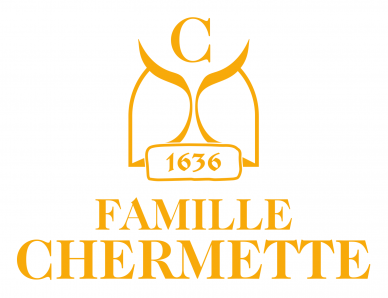
This new logo embodies the heritage of the Domaine Famille Chermette through the generations since the 17th century while preserving and enhancing it.
